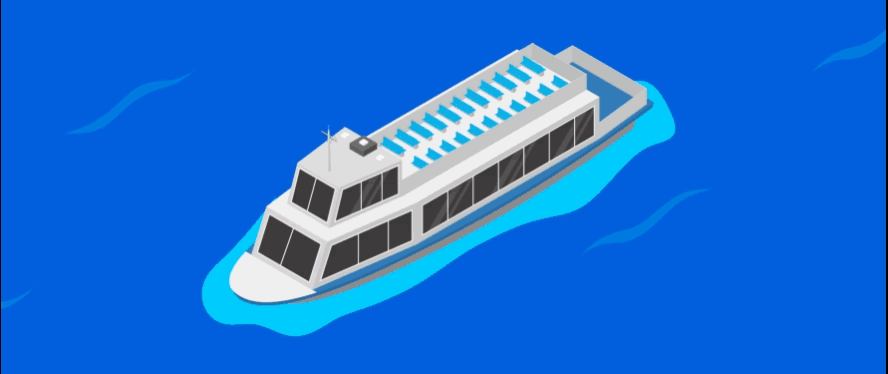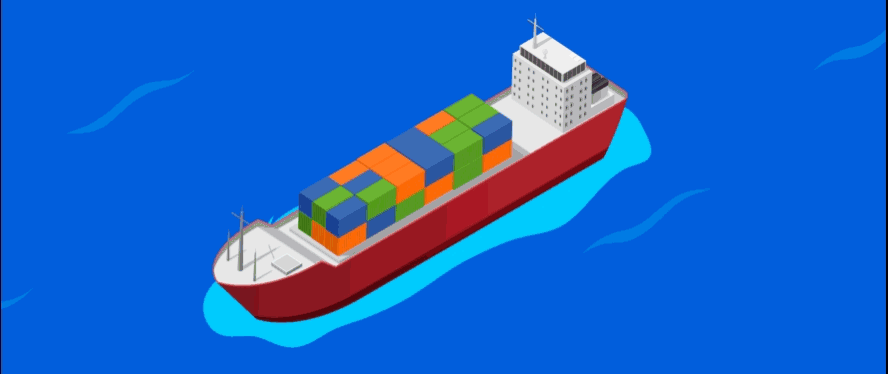
How river freight eases congestion in cities
What if river freight could accelerate decarbonisation and decongestion in cities? Major cities throughout the world are deploying new urban logistics focused on this sustainable and local alternative. Public transport, goods freight and industrial freight: let’s take a look at the latest initiatives!
Public river transport
Pioneering european cities
London, Rotterdam, Antwerp, Strasbourg and Stockholm. Many European cities are moving towards the development of public river transport. In the UK capital for example, 4 million passengers travel daily on the river Thames. What’s the key to the success of this system? Multimodal connections. River lines have been part of London’s underground and train network since 1999. Passengers can use their public transport card - or Oyster card - to get around!
France is not far behind
For some years now France has also been working on river transport. In Lyon, passenger river transport dates back to the second half of the 19th century, but this declining mode of transport has recently been reserved mainly for tourists. To ease congestion on the roads and railways, the city of Lyon will be deploying a network of shuttle boats on the Saône river, from Presqu'île from Vaise to Confluence, by 2025. A concrete solution offering a travel alternative and reducing congestion.

In the capital, the organisation Voies Navigables de France (VNF) has also presented 3 autonomous shuttle prototypes. They should connect the towns of Soisy-sur-Seine and Ris-Orangis to the major transport hub at Juvisy-sur-Orge, where the RER C and D lines as well as 28 bus lines interconnect. A trip along the Seine... without a pilot and without CO2 emissions! With fully electric shuttles tested in summer 2024.

Low-carbon impact tourist cruises
In Paris, cruises on the Seine are one of the favourite activities of tourists visiting the capital. The cruise operator Vedettes de Paris has adopted a proactive policy that aims to reduce its carbon impact by more than 50%. The company has decided to electrify its fleet of five tourist boats, which carry up to 1,250 passengers. Actemium Marine (VINCI Energies) has been selected for this challenge.
Towards development of river freight
Moving goods on the water rather than on roads means fewer bottlenecks but also less pollution: river freight emits 5 times less CO2 than road freight! The capacity of the ships means that a river convoy of 5,000 tonnes would save an estimated 230 to 250 trucks on the roads. This is a golden opportunity to decarbonise this sector, with a variety of projects coming online in Europe, such as in Strasbourg, which has had a river platform for goods transport towards the city centre since May 2018. Every day, 122 tonnes of beverages for cafés and restaurants as well as packages for individuals are carried by shuttle, then on an electric cargo bike.


The European Union has set itself the goal of achieving transfer of road freight to rail or river: 30% by 2030 and 50% by 2050.
To support this development in France and thus decarbonise the entire logistics chain, VNF assists river freight carriers with financial aid. The French state has earmarked over 3 billion Euros for the period 2020-2029. The objective? To modernise river routes and create new networks, such as the Seine-Nord canal. These investments are producing concrete results. Since 2022, the retail giant Ikea has been relying on river transport to deliver goods to Parisians. Orders are carried by boat to the port of Bercy, then loaded onto electric vehicles for the “final mile”.
Passengers, packages, but also... worksite waste! An example across the Channel is the Thames Tideway project: a super sewer to treat the water of the Thames. To evacuate the waste produced by the Tideway East worksite, for which VINCI Construction Grands Projets is the lead contractor, the teams chose to remove the excavated soil and transport the segments for this 25-kilometre, 7.20-metre wide tunnel on barges along the Thames. This choice will save close to 75,000 road trips, thus reducing the worksite’s carbon emissions by 5,200 tonnes.
truck less on the road for each 5000 tonnes river convoy.

After five years’ work, the teams at Petit (VINCI Construction) handed over La Samaritaine in 2022, an iconic Parisian building that had been completely refurbished as a mixed-use complex, featuring the restored famed department store, a hotel, restaurants, offices, residential accommodation and a nursery.
To evacuate the 110,000 cu. metres of waste (rubble, scrap metal, wood, cardboard and plastic), the company used barges to reduce the worksite’s carbon footprint and minimise congestion on the capital’s roads.
The choice to transport materials and evacuate waste via river is particularly suited to large-scale urban worksites, since large quantities of materials can be moved, thus reducing the project's impact. A single boat carries an average of 750 tonnes per journey, replacing back and forth journeys of over 30 trucks, thus limiting road congestion, noise pollution and air pollution...
tonnes carried by the building industry, the top user of France's river network in 2021.
Is river transport one of the solutions to the challenges of the ecological transition and the saturation of major city centres? Although it remains negligible in France, this mode of transport is seeing a resurgence in popularity. In 2023 it had grown by 40% in Paris. And new projects are continually cropping up... Could this be the start of a new era?
Sources :
Carbon 4
Les Echos
Most viewed
Vous aimerez aussi
Words from researchers: let's fight stereotypes!
Charlotte, a research fellow at École des Mines, and Erwan, a university professor and researcher at AgroParisTech, talk…
Fondation VINCI pour la Cité: opening the door to others is another way of reaching out!
With some 1.3 million organisations and 2 million employees, France can lay claim to a dynamic network of associations…
Sea water desalination: a solution for turning the tide on the water scarcity crisis?
As water shortages continue causing havoc in a growing number of regions around the world, an age-old idea is experiencing a…



